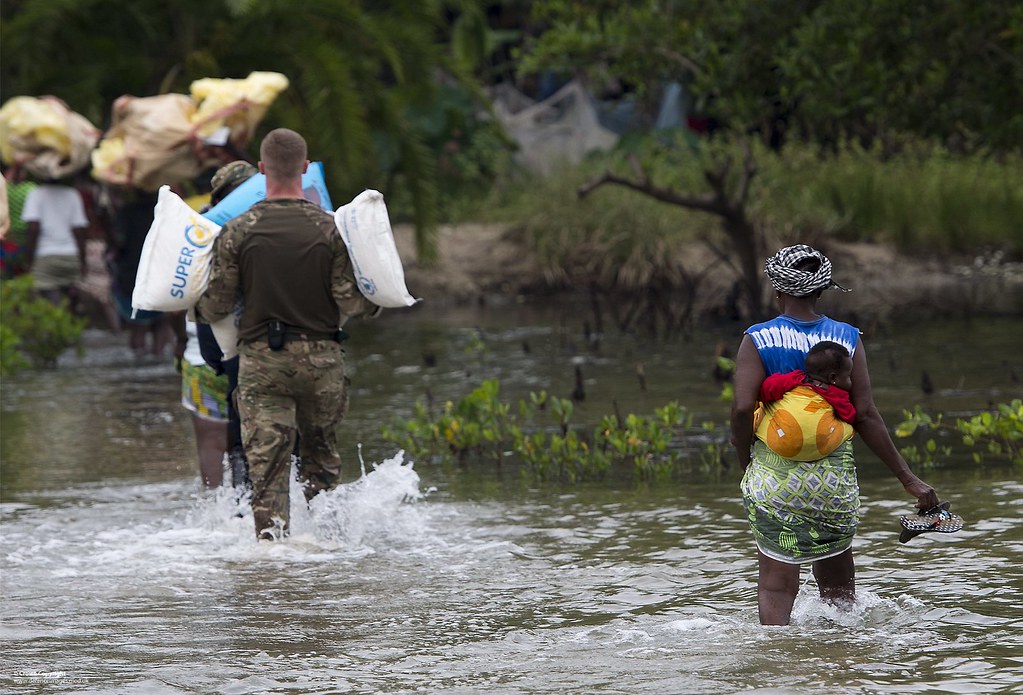Hydroelectric Renewable Energy in Sierra Leone
 Only 26% of Sierra Leoneans had access to electricity in 2022; an alarming statistic, but an increase from the 15% recorded a year earlier. As electrification rates continue to increase in the West African nation, could hydroelectric renewable energy be central to Sierra Leone’s development?
Only 26% of Sierra Leoneans had access to electricity in 2022; an alarming statistic, but an increase from the 15% recorded a year earlier. As electrification rates continue to increase in the West African nation, could hydroelectric renewable energy be central to Sierra Leone’s development?
The Divide
Due to the impact of the COVID-19 pandemic, poverty progress in Sierra Leone has stagnated and even reversed in some areas of the nation. Sixty percent of Sierra Leoneans live below the poverty line, and geographic dispersion causes fluctuations between regional poverty rates. This results in a major disparity between the 23% in poverty in urban regions and 74% in poverty in rural regions of the nation.
In 2021, electricity access reflected this regional discrepancy: 17% relied on the grid, with 2-3% relying on mini-grids; rural areas only received close to 10% of what industrialized areas did; and the tropical seasonal shifts in Sierra Leone forced the country to depend on an inconsistent electricity supply. However, amidst these low statistics, the growing prospect of renewable energy in Sierra Leone is promising.
Leveling the Field
Two years later, and with several multi-million dollar grants heading Africa’s way to boost renewable energy on the continent, Sierra Leone is dedicated to increasing electricity access, hoping to reach 92% by 2030. This is an ambitious goal, and the nation is aware that, if this ideal is to become a reality, support from wealthier international countries will be necessary.
In 2023, through consistent support, there is clear growth in renewable energy in Sierra Leone. Whether it is the six hospitals, — in Freetown, Kambia, Masanga, Kabala and Bonthe — that solar will now power, or by the completion of 49 mini-grids, functional as of July, that are delivering reliable sustainable energy to the rural areas of Sierra Leone.
What About the Water?
While investments, that enhanced the rate of access to renewable energy in Sierra Leone, piled up, it was the nation’s hydropower that was at the forefront of its total energy generation.
The importance of hydroelectricity in Sierra Leone is reflective of a larger dependence on marine life in the region. Fish provides 80% of the protein in the Sierra Leonean diet, and, of the many coastal households, 98% are involved with fishing activities.
With marine fisheries contributing to 12% of the nation’s GDP, its close relative, hydropower, has been on the agenda of Sierra Leone since 2021. In that year, from the 244 Gwh produced by renewable energy sources in Sierra Leone, hydropower was responsible for 228. A year later, hydropower constituted 58% of the nation’s overall renewable capacity.
In 2023, the progression of hydroelectric energy production continues and again reflecting the fishery business in which women are at the forefront of selling the catch that men catch, the hydropower industry is operating at the intersection between advancing renewable energy in Sierra Leone and striving for gender equality. The Global Energy Alliance for People and Planet (GEAPP), has collaborated with Shortlist and Value for Women to create Women for Green Jobs, while Sustainable Energy for All (SEforALL) has introduced an apprenticeship that hopes to inspire young women in energy, by providing tailored training of 12 university graduates.
Hydropower: the Future
Since 2005, Sierra Leone’s firstever power plant, Bumbuna Dam, has produced more than half of the nation’s total electricity. In 2023, a partnership between Bitgreen, Sewa Energy Resources (SERL) and GEAPP, sees a step towards a more sustainable future for renewable energy in Sierra Leone, thanks to the Betmai Hydroelectric Facility.
This 27-megawatt hydropower river project not only aligns the nation with its government’s ambition to transform its energy sector — bringing cost-efficient, renewable electricity to 500,000 Sierra Leoneans — but has brought with it new job opportunities. Estimates have indicated that the facility will generate more than 300,000 jobs in the region while cutting emissions of CO2 by 675,000 tons.
Post-COVID-19, domestic and international intention seems set on developing sustainable energy practices in Africa. The progression of renewable energy in Sierra Leone reflects this. With consistent investment, this progress need not halt. Hydropower will carry Sierra Leone into a future of prosperity and self-reliance.
– Joseph Wray
Photo: Wikipedia Commons
